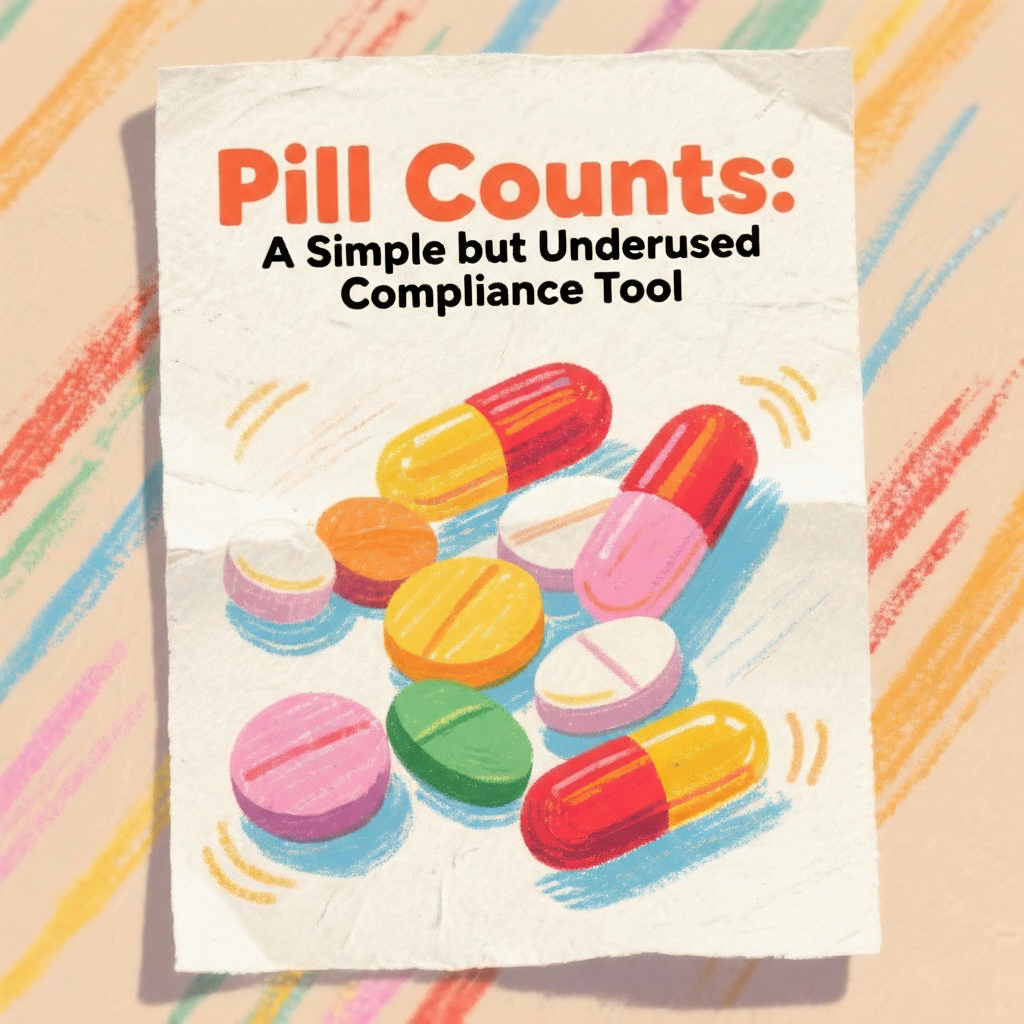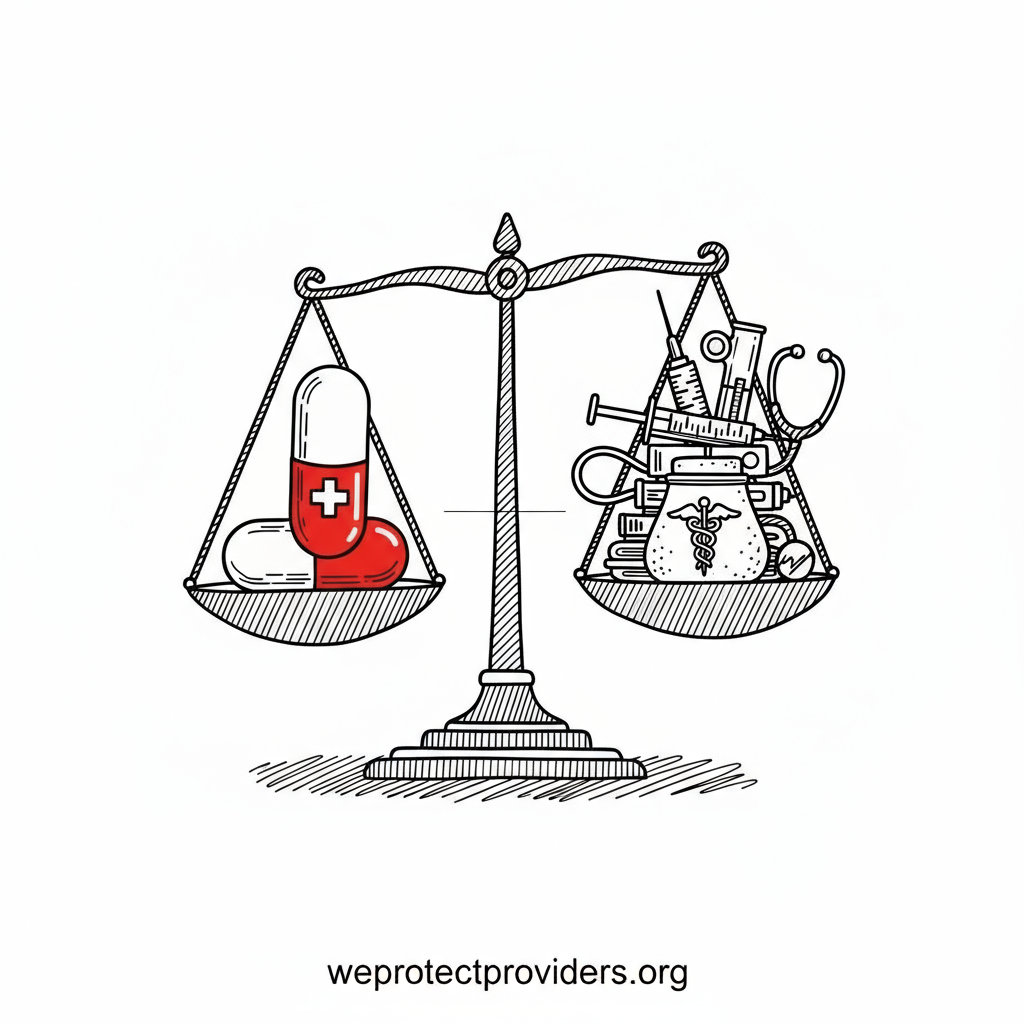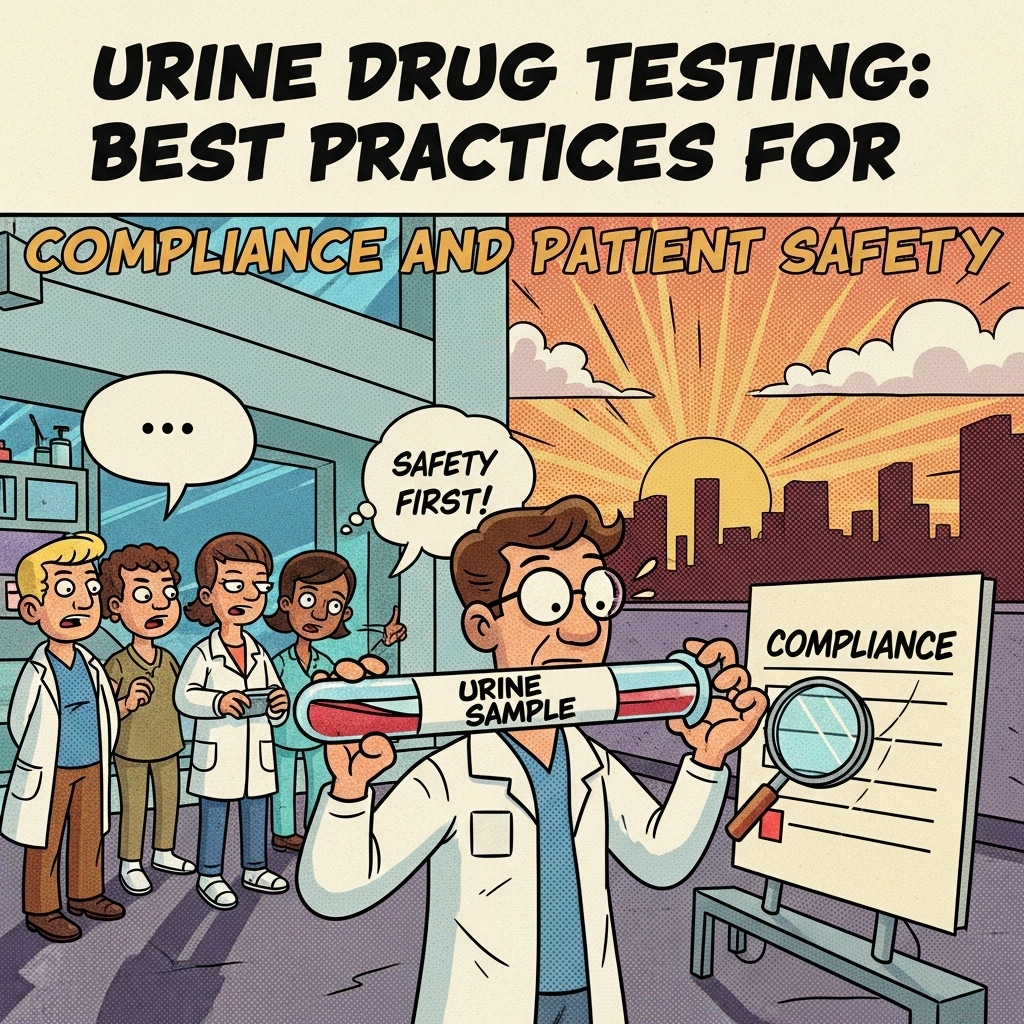
Pill Counts: A Simple but Underused Compliance Tool
Doug Jorgensen
March 21, 2025
Introduction: Small Step, Big Impact
When it comes to controlled substance monitoring, most providers think first of urine drug testing and Prescription Monitoring Programs (PMPs).
But there’s another low-cost, low-tech tool that can be just as effective: the pill count.
Done correctly, a pill count can reveal medication misuse, diversion, or nonadherence long before bigger problems arise.
What Is a Pill Count?
Pill counts effectively monitor patient medication adherence and identify potential misuse. Patients bring all prescribed medication to appointments. A healthcare provider meticulously counts the pills, comparing the amount to the expected quantity based on prescription date, dosing schedule, and initial dispensed quantity.
Discrepancies indicate issues:
- Overuse (Fewer pills than expected): Suggests taking more than prescribed, increasing side effect risk, potential dependency, faster depletion, and masking underlying health issues.
- Diversion (Significantly fewer pills than expected): Points to selling or giving away medication, contributing to illicit drug markets, overdose risk, and legal issues.
- Underuse (More pills than expected): Indicates not taking medication as prescribed due to forgetfulness, side effects, perceived lack of efficacy, cost, misunderstanding instructions, or hoarding. This leads to ineffective treatment, worsening symptoms, and potential adverse events.
Pill counts are vital for healthcare providers to discuss adherence, address barriers, and prevent harm or misuse.
Why Pill Counts Matter
Pill counts are a simple yet underutilized tool for managing prescribed medications, especially those with a high potential for misuse. They offer several benefits:
- Risk Mitigation: They provide evidence of active monitoring, setting expectations for responsible use and flagging discrepancies in dosage.
- Early Intervention: They help detect misuse early, allowing for timely intervention before issues escalate.
- Regulatory Compliance: They often meet mandated requirements for high-risk prescribing, protecting providers from legal issues.
- Patient Safety: They ensure appropriate medication use, preventing over- or under-consumption, diversion, and dangerous drug interactions.
Pill counts foster trust and promote safe medication management by facilitating dialogue between providers and patients.
Best Practices for Conducting Pill Counts
Maintaining the integrity of the medication and the counting process is paramount to ensure accuracy and defensibility.
- Ensure medications are handled in a way that maintains accuracy and defensibility. All staff involved in conducting pill counts must be rigorously trained on proper chain of custody procedures. This includes clear protocols for receiving, counting, and returning medications to the patient. Training should cover how to minimize errors, prevent tampering, and maintain the integrity of the medication during the entire process. Adhering to strict chain of custody protocols safeguards the accuracy of the count and provides a legally defensible process should any issues arise.
- For honest pill counts, surprise is key. Avoid announcing counts in advance; random timing offers a more accurate view of adherence and discourages misuse.
- Integrate pill counts into follow-up visits, combining them with urine drug testing (UDT) and Prescription Monitoring Program (PMP) reviews. This comprehensive approach helps identify red flags like discrepancies, unprescribed substances, or multiple prescriptions.
- Document thoroughly: record the date, time, actual count, and expected count. Note any discrepancies and follow-up actions to track compliance, identify patterns, and provide defensible data.
- Train staff on chain of custody to ensure accuracy and defensibility. Strict protocols for handling, counting, and returning medications minimize errors and prevent tampering.
- Surprise Pill Counts: Surprise is crucial for honest pill counts. Avoid announcing them in advance; random timing offers a more accurate view of adherence, discouraging misuse.
- Incorporate into Follow-Up Visits: Integrate pill counts into follow-up visits, combining them with urine drug testing (UDT) and Prescription Monitoring Program (PMP) reviews. This comprehensive approach helps identify red flags like discrepancies, unprescribed substances, or multiple prescriptions.
- Document Thoroughly: Document thoroughly, recording the date, time, actual count, and expected count. Note any discrepancies and follow-up actions to track compliance, identify patterns, and provide defensible data.
- Train Staff on Chain of Custody: Train staff on chain of custody to ensure accuracy and defensibility. Strict protocols for handling, counting, and returning medications minimize errors and prevent tampering.
Common Pitfalls to Avoid
Pill counts are effective for assessing medication adherence only if executed carefully, proactively addressing challenges. Healthcare providers must avoid common pitfalls like relying solely on patient reports. Always verify self-reported adherence by physically counting pills to obtain objective data. Failing to act on discrepancies renders the count meaningless. Investigate discrepancies to understand underlying reasons, leading to improved adherence. Inconsistent enforcement erodes trust and compromises validity. Standardized protocols ensure equitable treatment and reinforce adherence importance, vital for maintaining therapeutic alliance and adherence monitoring integrity.
How Pill Counts Fit Into a Broader Strategy
Pill counts are most effective when part of a comprehensive strategy for managing controlled substance prescriptions, enhancing compliance, reducing diversion risk, and providing strong regulatory documentation.
This integrated approach combines pill counts with:
- Controlled Substance Agreements (CSAs): Establish clear patient expectations and responsibilities for medication adherence.
- Urine Drug Testing (UDT): Objectively measures adherence and detects unprescribed substances, offering complementary data to pill counts.
- Prescription Monitoring Programs (PMPs): State databases that help identify “doctor shopping” or high-risk behaviors by flagging inconsistencies in dispensing patterns.
- Regular Follow-up Visits: Crucial for monitoring progress, conducting pill counts, reviewing UDT and PMP data, and adjusting treatment plans.
This layered system fosters accountability, promoting safer and more effective controlled substance management.
Patient Communication Tips
Pill counts, a standard safety measure for controlled substances, can cause patient defensiveness. To ensure productive discussions:
- Frame as universal safety: Explain pill counts are routine for all patients to ensure safety and comply with best practices.
- Highlight treatment access: Emphasize that compliance helps ensure continued medication access.
- Avoid accusatory language: Use objective phrasing like “verify medication supply” instead of implying distrust.
- Educate and empower: Inform patients about adherence importance and how their cooperation ensures their safety and treatment integrity.
- Address concerns openly: Answer questions and calmly reiterate the purpose of the pill count to build trust.
Final Thoughts: An Underused but Powerful Tool
Pill counts may not be high-tech, but they are highly effective.
They cost nothing, require minimal time, and provide valuable data for clinical decision-making and regulatory defense.
In a world focused on digital solutions, sometimes the simplest tools—used consistently—make the biggest difference.
About the Author
Douglas J. Jorgensen, DO, CPC, FAAO, FACOFP
Dr. Doug is a physician, consultant, and national educator on healthcare compliance, controlled substance monitoring, and risk mitigation. He helps organizations build prescribing protocols that stand up to clinical and regulatory scrutiny.


